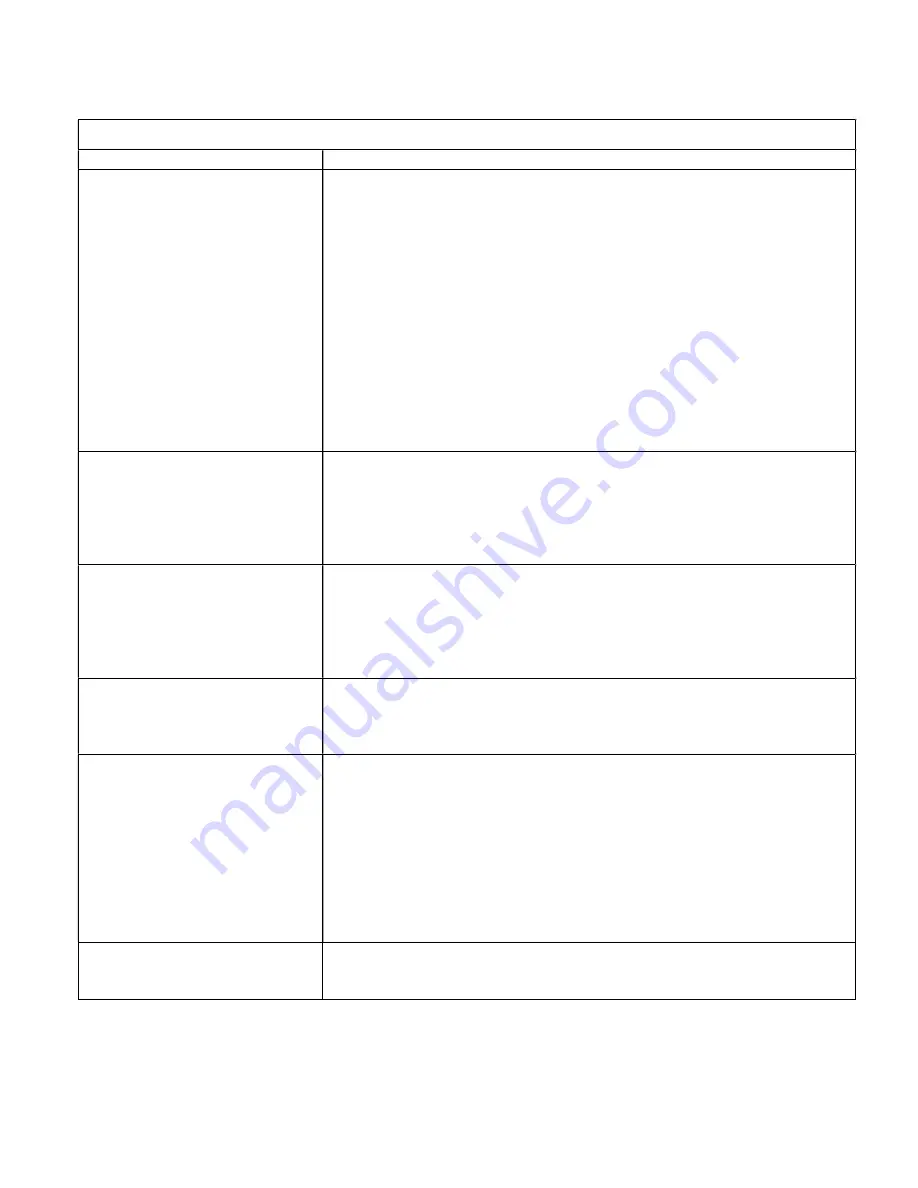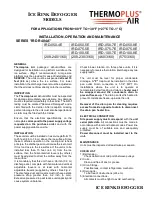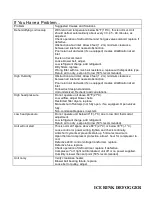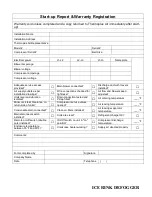
ICE RINK DEFOGGER
If You Have a Problem…
Problem
Suggested Causes and Solutions
Dehumidifying coil iced-up
With return air temperature below 64°F (18°C), this is normal. Unit
should defrost automatically about every 30 - 45 - 90 minutes, as
adjusted.
Check operation of defrost timer and hot gas valve solenoid, replace if
defective.
Obstruction at air inlet. Allow 4 feet (1.2 m) minimum clearance
between air inlet and nearest obstruction.
Poor return air ductwork (if so equipped) creates stratification at air
inlet.
Ducts not recommend.
Loose blower belt, adjust.
Low refrigerant charge, add refrigerant.
Dirty filters, replace.
Wrong filter with too much air resistance, replace with disposable type.
Return air too dry, set point to low (50% recommended).
High Humidity
Obstruction at air inlet. Allow 4 feet (1.2 m) minimum clearance
between air inlet and nearest obstruction.
Poor return air ductwork (if so equipped) creates stratification at air
inlet.
Follow duct design standards.
Unit undersized. Recheck load calculations.
High head pressure
Do not operate unit above 80°F (27°C).
Low airflow, adjust blower belts.
Restricted filter dryers, replace.
Manual shut off valve(s) not fully open, if so equipped. Open valves
fully.
Non-condensable gases in system.
Low head pressure
Do not operate unit below 30°F (-1°C) due to low limit thermostat
adjustment.
Low refrigerant charge, add refrigerant.
Return air too dry, set point to low (50% recommended).
Unit will not start
This is normal if space above 80°F (27°C) or below 30°F (-1°C).
Loose control or power wiring, tighten and check continuity.
Anti-short cycle timer prevents start-up. 5 minutes maximum.
Open thermal compressor protection, allow 1 hour for compressor to
cool.
Defective 240V control voltage transformer, replace.
Defective fuse, replace.
Check operation of defrost timer, replace if defective.
Compressor "on" light not illuminated, unit off or no power supplied.
Humidity is lower then set point (50% recommended).
Unit noisy
Verify crankcase heater.
Blower ball bearing failure, replace.
Loose belt or pulley, adjust.



























